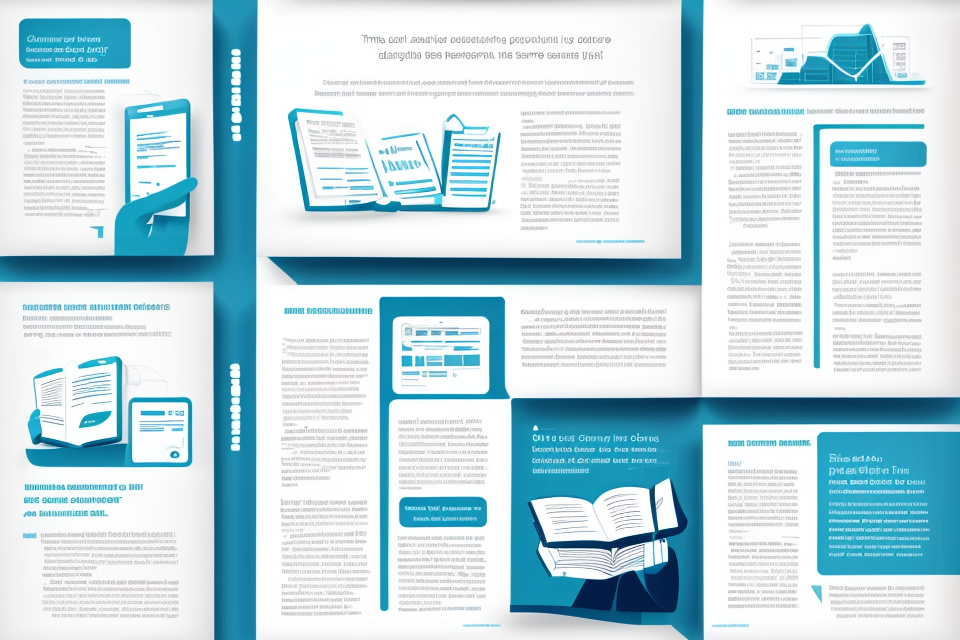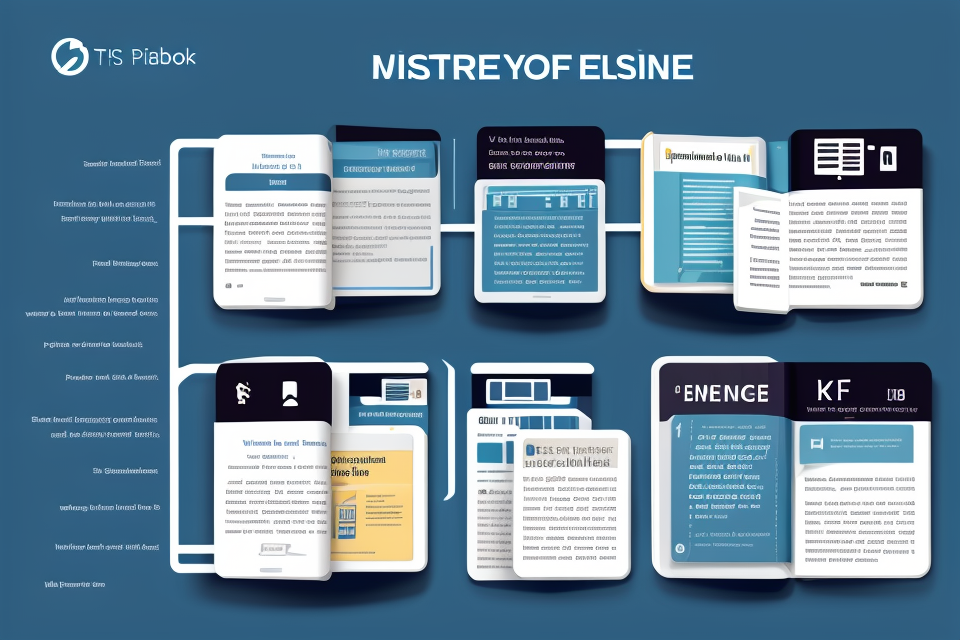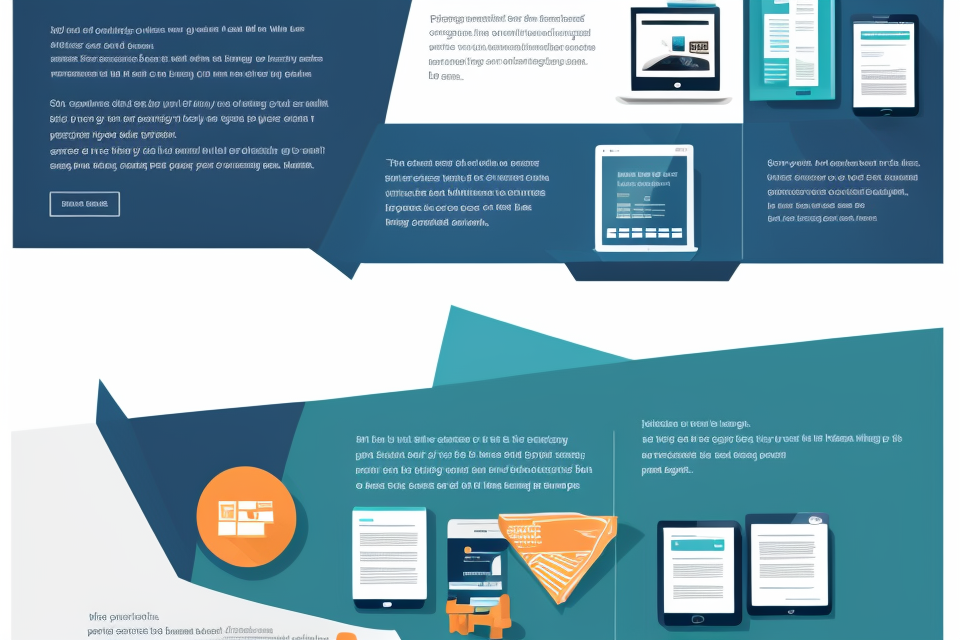
In today’s digital age, the debate over whether printed books or eBooks are the better choice has become a topic of much discussion. Some prefer the tactile experience of holding a physical book, while others enjoy the convenience and accessibility of digital reading. This article aims to provide a comprehensive comparison of both formats, examining their advantages and disadvantages, and ultimately answering the question: which is the better choice? So, let’s dive in and explore the world of books, both in print and in digital form.
The Pros and Cons of Reading Printed Books
Advantages of Reading Printed Books
- Tangible Reading Experience
Printed books offer a tangible reading experience that cannot be replicated by e-books. The feel of the paper, the weight of the book, and the sound of the pages turning all contribute to a more immersive and sensory experience. This tactile experience can be especially important for children who are developing their sense of touch and for individuals who prefer a more hands-on approach to reading. - No Battery Required
Unlike e-books, printed books do not require a battery or electrical power to function. This means that readers can enjoy their books anywhere, even in places where electricity is not available. This can be especially beneficial for individuals who are traveling or camping and may not have access to a power source. - Notes and Highlights
One of the biggest advantages of printed books is the ability to take notes and highlight important passages. This feature is not available in most e-books and can be a major drawback for readers who enjoy annotating their books. The ability to take notes and highlights can also be useful for students who are studying and need to remember important information. - Easy to Share
Printed books are easy to share with others. Readers can lend their books to friends or family members, sell them used, or donate them to libraries or schools. This makes it easier for individuals to access a wider range of books and to share their love of reading with others. In contrast, e-books are typically tied to a specific device or account and cannot be easily shared with others.
Disadvantages of Reading Printed Books
One of the main disadvantages of reading printed books is their limited portability. Unlike eBooks, which can be easily carried around in a digital device, printed books are heavy and bulky, making them difficult to bring with you on the go. This can be especially problematic for those who travel frequently or have busy lifestyles that require them to be constantly on the move.
Another disadvantage of printed books is that they can be expensive. While the cost of a printed book may not seem significant at first glance, when you factor in the cost of purchasing multiple books, as well as the cost of shipping and handling, the expense can quickly add up. In addition, many people prefer to purchase books from local bookstores, which can be more expensive than online retailers.
Printed books also take up physical space, which can be a problem for those who live in small apartments or have limited storage space. Once you have purchased a book, it must be stored somewhere, and this can quickly become a challenge, especially if you are an avid reader.
Finally, printed books are easily damaged. They can be dropped, spilled on, or exposed to extreme temperatures, which can cause them to become warped or disfigured. While some damage can be repaired with a little bit of TLC, other damage may be irreparable, which can be frustrating for those who have invested time and money into purchasing a book.
The Pros and Cons of Reading EBooks
Advantages of Reading EBooks
One of the main advantages of reading eBooks is their convenience and portability. With eBooks, readers can carry an entire library on a single device, such as a tablet or e-reader. This makes it easy to take multiple books on the go, without having to worry about physical space or weight.
In addition to convenience, eBooks are also cost-effective. The cost of purchasing an eBook is often significantly lower than that of a printed book, especially when factoring in the cost of shipping and handling. This makes it more accessible for people who are on a budget or who live in areas where books are not readily available.
Another advantage of eBooks is instant access. Once a book is purchased, it can be downloaded and read immediately, without the need for shipping or waiting for a book to arrive. This makes it easy for readers to get started on a book right away, without having to wait for it to arrive in the mail.
Finally, eBooks offer adjustable font sizes and lighting, making them easier to read for people with visual impairments. This feature allows readers to customize the font size and background lighting to their personal preferences, making it easier to read for extended periods of time. Overall, these advantages make eBooks a popular choice for many readers.
Disadvantages of Reading EBooks
One of the main disadvantages of reading eBooks is that it requires electronic devices. This means that readers must have access to a device that is capable of displaying eBooks, such as a tablet, eReader, or smartphone. For some people, this can be a significant barrier to entry, as they may not have access to these devices or may not want to purchase them.
Another disadvantage of reading eBooks is that it limits the ability to take notes and highlight text. While some eReaders and apps allow for notes and highlights, they are often limited in comparison to the ability to annotate printed books. This can be especially problematic for students or researchers who rely heavily on taking notes and highlighting important information.
In addition, reading eBooks can often feel less intimate than reading printed books. There is something about holding a physical book and feeling the weight of the pages in your hands that cannot be replicated on a screen. Some readers find that they are more easily distracted when reading on a screen, and that they are less likely to feel fully immersed in the story.
Finally, eBooks are more easily pirated than printed books. While printed books can be stolen or photocopied, it is much easier to share an eBook with others digitally. This can lead to a loss of revenue for authors and publishers, as well as a decrease in the overall value of the book.
The Impact of Technology on Reading Habits
The Evolution of Reading Technology
From Papyrus to Print
The history of reading technology dates back to ancient Egypt, where the papyrus scroll was used as a writing material. The scroll was made from the pith of the papyrus plant, which was cut into thin strips and woven together. The Egyptians used a pen-like tool called a reed brush to write on the papyrus, creating a written record that could be read from side to side.
From Print to EBooks
The invention of the printing press by Johannes Gutenberg in the 15th century revolutionized the way books were produced and consumed. With the ability to mass-produce books, knowledge became more accessible to the general public. The invention of the printing press led to the creation of the first printed books, which were known as incunabula.
With the advent of electronic technology, eBooks have become a popular alternative to printed books. EBooks offer several advantages over their printed counterparts, including portability, convenience, and accessibility. However, some readers still prefer the tactile experience of holding a physical book in their hands.
In recent years, eBook readers such as the Amazon Kindle and the Barnes & Noble Nook have gained popularity among readers. These devices allow readers to carry an entire library of books with them wherever they go, without the need for physical space. Additionally, eBooks can be downloaded instantly, making them more convenient than physically going to a bookstore or library.
However, despite the advantages of eBooks, some readers still prefer the tactile experience of holding a physical book in their hands. The smell of the paper, the feel of the cover, and the ability to flip through the pages are all aspects of reading that cannot be replicated on an eReader. Additionally, some readers find it easier to focus on a printed book, as they are not distracted by the glow of a screen.
Overall, the evolution of reading technology has led to the creation of both printed books and eBooks, each with their own unique advantages and disadvantages. Ultimately, the choice between the two is a personal one, based on individual reading preferences and habits.
The Effect of Technology on Reading
The Attention Span
With the rise of technology, readers have become accustomed to consuming information quickly and efficiently. This has led to a decrease in attention span, making it difficult for readers to focus on lengthy printed texts. On the other hand, eBooks offer the convenience of adjusting font sizes and line spacing, making it easier for readers to maintain focus.
The Reading Speed
The digital age has made it possible for readers to access an enormous amount of information at an unprecedented speed. EBooks offer the advantage of instant access to a vast library of texts, making it easier for readers to consume books at a faster pace. However, printed books provide a more immersive reading experience, allowing readers to engage with the text on a deeper level.
The Comprehension
Research has shown that readers tend to comprehend texts better when they are presented in print format. This is due to the fact that printed texts offer a more immersive reading experience, allowing readers to better understand the context and meaning of the text. EBooks, on the other hand, may offer more distractions, such as hyperlinks and multimedia, which can detract from the reading experience and reduce comprehension.
In conclusion, the effect of technology on reading is multifaceted and has both advantages and disadvantages. While eBooks offer convenience and speed, printed books provide a more immersive and comprehensive reading experience. Ultimately, the choice between printed books and eBooks depends on personal preferences and reading habits.
Factors to Consider When Choosing Between Printed Books and EBooks
Reading Goals
Speed of Reading
One of the main advantages of eBooks is their ability to be read at a faster pace than printed books. This is because eBooks can be instantly downloaded and accessed, eliminating the need to wait for shipping or travel to a bookstore. Additionally, eBooks can be read on various devices, including tablets and smartphones, which are often more portable and convenient than carrying physical books. However, some readers may find that the physical act of turning pages in a printed book enhances their reading speed and comprehension.
Note-Taking and Highlighting
EBooks offer a variety of digital tools for note-taking and highlighting, which can be helpful for readers who want to retain important information or cite specific passages. With eBooks, readers can highlight and annotate text, add bookmarks, and create custom notes that can be easily accessed later. In contrast, printed books offer a more traditional method of taking notes, such as writing in the margins or using a separate notebook. However, some readers may find that the tactile experience of holding a book and physically interacting with it enhances their ability to focus and engage with the text.
Cost and Availability
One of the most significant advantages of eBooks is their cost and availability. EBooks are often cheaper than printed books, especially for less popular titles or older works that are no longer in print. Additionally, eBooks can be easily accessed from online retailers or libraries, without the need to physically travel to a store or wait for shipping. However, some readers may prefer the tangible experience of holding a physical book and may be willing to pay a premium for rare or collectible editions.
FAQs
1. What are the advantages of reading printed books?
Printed books offer a tactile reading experience that many people find more enjoyable and immersive. They allow readers to physically interact with the pages, flip back and forth, and even annotate or highlight text. Printed books also tend to have a more aesthetically pleasing design, with high-quality paper and binding, making them a great choice for book lovers who appreciate the look and feel of a well-made book. Additionally, printed books do not require electricity or batteries, making them a convenient choice for those who want to read without the need for any technology.
2. What are the advantages of reading eBooks?
EBooks offer a number of advantages over printed books. They are often more convenient to carry around, as they can be stored on a single device and accessed at any time. EBooks are also typically more affordable than printed books, as they do not require printing or shipping costs. They can also be downloaded instantly, making them a great choice for those who want to access a book immediately. Additionally, eBooks often have interactive features, such as hyperlinks and multimedia content, that can enhance the reading experience.
3. Are there any downsides to reading eBooks?
Some readers may find that eBooks are less immersive than printed books, as they can be distracting or difficult to read on certain devices. EBooks may also lack the aesthetic appeal of printed books, as they are often displayed on a screen rather than on high-quality paper. Additionally, eBooks may not be as durable as printed books, as they can be damaged or lost if a device is lost or broken.
4. Are there any downsides to reading printed books?
Printed books can be more expensive than eBooks, as they require printing and shipping costs. They can also be more difficult to carry around, as they are typically heavier and bulkier than eBook readers. Additionally, printed books may not be as environmentally friendly as eBooks, as they require more resources to produce and dispose of.
5. Which format is better for learning?
Both printed books and eBooks have their own advantages when it comes to learning. Printed books may be better for note-taking and highlighting, as they allow readers to physically interact with the text. EBooks, on the other hand, may be better for studying and research, as they allow readers to easily search for and access specific information. Ultimately, the best format for learning will depend on the individual reader’s preferences and needs.


